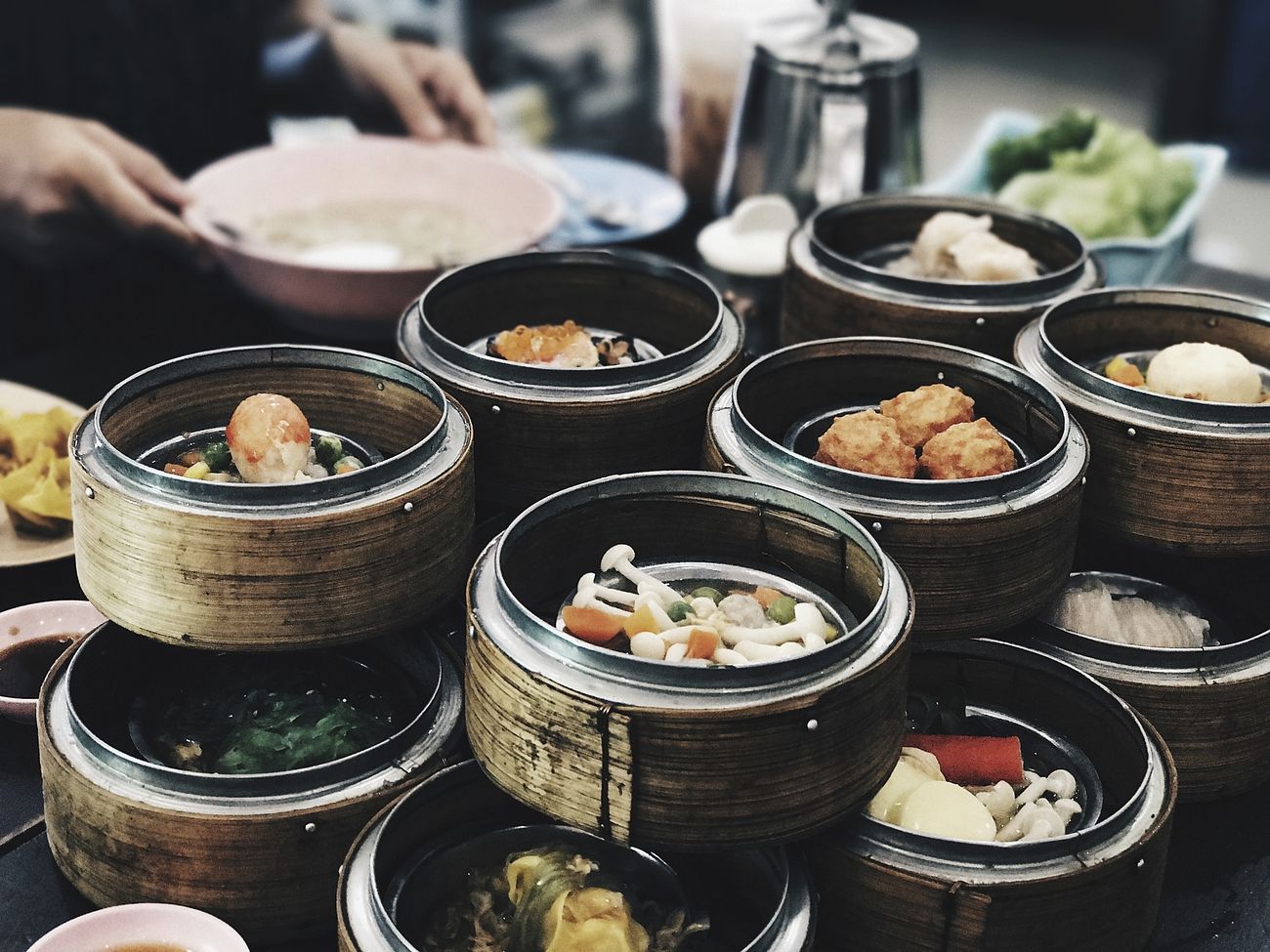Discover the flavors and history of traditional Chinese Dim Sum with these top 10 dishes
Dim Sum, a traditional Chinese meal consisting of small plates of food served in a casual setting, has a 1,000-year history. Dim Sum, which began as a breakfast meal for tea merchants and travelers in the southern Chinese province of Guangdong, has evolved into a popular dining experience enjoyed by people all over the world.
Washing dishes before eating dim sum is a traditional practice in Cantonese cuisine, particularly in the context of dim sum service in Chinese tea houses. The practice originates from the idea that dishes and utensils should be cleaned and sanitized before use, especially when they are shared among multiple customers. It is also believed that washing the dishes before eating enhances the flavors and aromas of the dim sum, as the clean and warm dishes allow the steamed items to retain their heat better.
Servers push carts of steaming dishes through the dining room, and customers choose the dishes that appeal to them. Dim Sum is traditionally consumed in large groups, making it a social and pleasurable dining experience.

Here are the top ten Dim Sum dishes you should try:
Har gow (shrimp dumplings)
Har gow (shrimp dumplings) are translucent steamed dumplings filled with juicy shrimp and wrapped in a thin layer of dough. Har gow, which originated in the Guangdong province, was traditionally served as a luxury item due to the high cost of the shrimp. They are now a dim sum restaurant staple, known for their delicate and flavorful filling.
Pork and shrimp dumplings (siu mai)
Siu mai are open-topped dumplings steamed in a bamboo basket with minced pork, shrimp, and vegetables. Siu mai originated in the Fujian province of southeastern China and are commonly served as a breakfast or snack food. They are a popular Dim Sum option due to their savory filling and tender wrapper.
Barbecue pork buns baked (cha siu bao)
These soft, fluffy buns are steamed or baked and filled with sweet, roasted barbecue pork. Cha siu bao, a popular Cantonese snack, is frequently served at Dim Sum restaurants. They’re a must-try Dim Sum dish because of the soft bun and savory filling.
Chicken feet steamed (fung zao)
Steamed chicken feet are a traditional Cantonese dish that is considered a delicacy due to the time and effort required to prepare them. The collagen-rich feet are braised and served with a fermented bean paste sauce, and they are tender and flavorful.
Turnip cakes fried in oil (lo bak go)
These savory cakes are made with grated turnip and flour and pan-fried to create a crispy exterior with a soft, creamy interior. Lo bak go, a popular Dim Sum dish, is frequently served with a variety of dipping sauces. They are a must-try Dim Sum dish due to the combination of flavors and textures.
Egg custard buns steamed (dan tat)
These soft, pillowy buns are steamed to perfection and filled with a smooth, creamy custard filling. Dan tat, a popular Dim Sum dessert, is frequently served with a variety of sweet toppings like sesame seeds or coconut. The contrast between the fluffy bun and the rich filling makes them a tasty and filling treat.
Beef balls (ngau yok kau)
陈皮牛肉球 (chén pí niú ròu qiú) is a Cantonese dish that consists of beef balls that are simmered in a savory broth made with dried tangerine peel (陈皮) and various seasonings. Dried tangerine peel is a common ingredient in Chinese cuisine, known for its fragrant citrus aroma and slightly bitter taste.
The beef balls should have a tender and juicy texture, and the broth should have a savory, slightly sweet and slightly bitter flavor from the dried tangerine peel. The beef balls are typically simmered for a long time, to allow the flavors to meld together and for the beef to become very tender.
Rolls of rice noodles (cheung fun)
These thin, delicate rice noodles are filled with savory fillings like shrimp, BBQ pork, or bean curd before being rolled and steamed. Cheung fun, a popular Dim Sum dish, is frequently served with a variety of dipping sauces. The soft, slippery noodles combined with the savory filling make them a satisfying and tasty treat.
Eating Dim Sum is a cultural experience and trying these top ten dishes is a great way to get started. Don’t be afraid to experiment with new flavors and textures that Dim Sum has to offer.
Sticky rice chicken wrapped in a lotus leaf (Lo Mai Gai)
Lo Mai Gai (糯米雞) is a traditional Cantonese dish that consists of glutinous rice, chicken, mushrooms, and various seasonings, wrapped in a lotus leaf and steamed to perfection. The rice is usually seasoned with soy sauce, oyster sauce, sesame oil, and other seasonings, giving it a savory and slightly sweet flavor. The chicken is usually marinated beforehand to give it a tender and juicy texture. The lotus leaf imparts a unique aroma and flavor to the dish.
Fried Taro dumplings (woo gok)
These tasty dumplings are filled with a taro root and meat mixture, coated in a thin layer of dough, and deep-fried until crispy. Woo gok, a popular Cantonese street food, is frequently served as a snack or appetizer. The creamy and slightly sweet filling complements the crispy exterior perfectly.
Further reading:
Here are some resources for further reading on Dim Sum and the dishes mentioned in the article:
- “A Brief History of Dim Sum” by Saveur: https://www.saveur.com/article/Travels/A-Brief-History-of-Dim-Sum/
- “10 Must-Try Dim Sum Dishes” by Food & Wine: https://www.foodandwine.com/travel/united-states/california/san-francisco/10-must-try-dim-sum-dishes
- “The Best Dim Sum in Hong Kong: A Guide to the Top Dishes” by CNN Travel: https://www.cnn.com/travel/article/hong-kong-best-dim-sum/index.html
- “Dim Sum: A Guide to the Most Popular Dishes” by Culture Trip: https://theculturetrip.com/asia/china/articles/dim-sum-a-guide-to-the-most-popular-dishes/
These resources provide more information on the history and cultural significance of Dim Sum, as well as descriptions and recommendations for various Dim Sum dishes. I hope these links are helpful for further reading on the topic!



